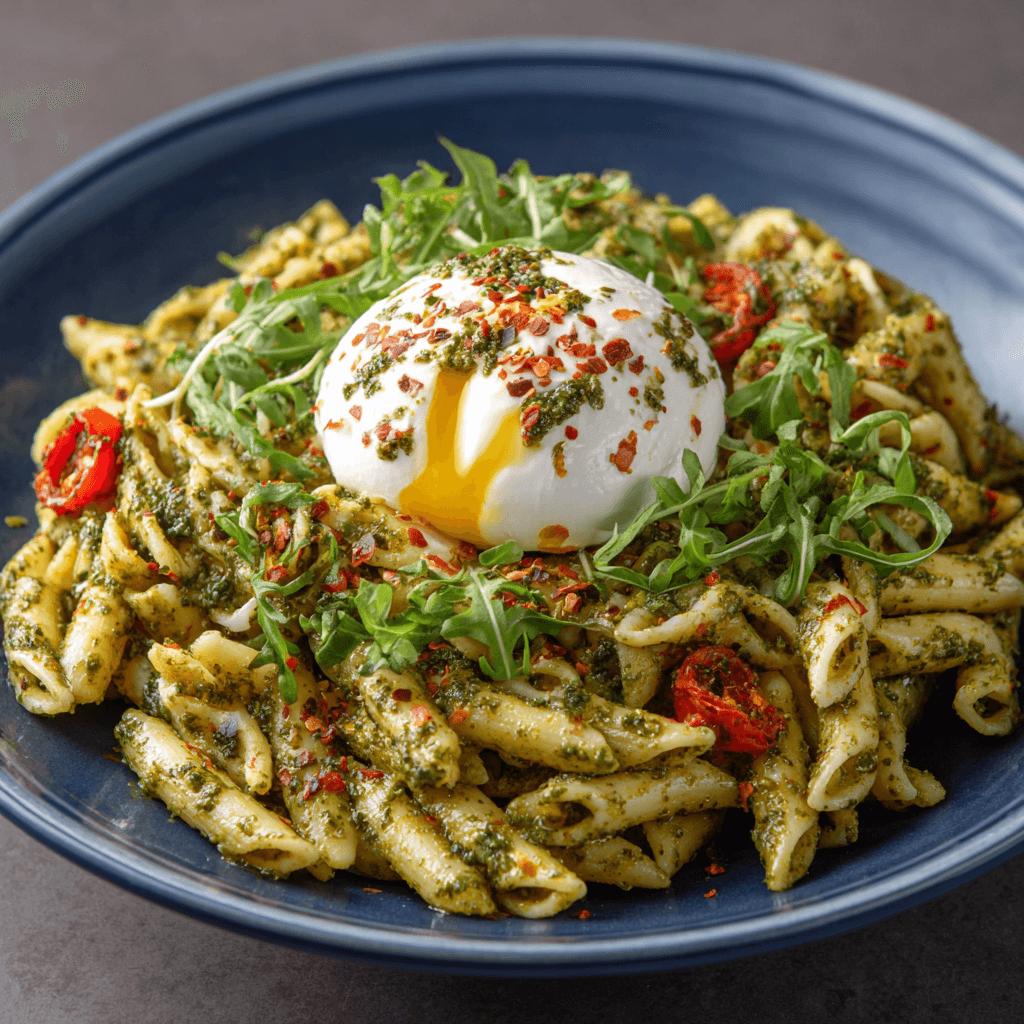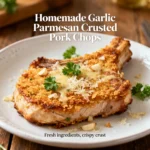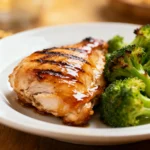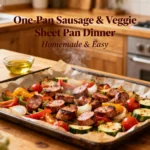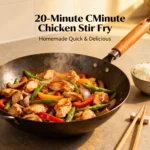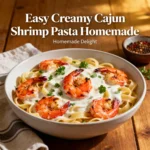Introduction
Pesto pasta with burrata is a luxurious and flavorful Italian dish that brings together the vibrant freshness of basil pesto with the creamy richness of burrata cheese. This combination elevates a simple pasta dish into something truly special—perfect for a quick dinner, a romantic meal, or even a party-ready appetizer. Whether you’re an experienced cook or just starting out in the kitchen, this recipe promises to impress with minimal effort and maximum taste.
The History
Basil pesto has its roots in Genoa, located in the Liguria region of Italy. Traditionally called pesto alla Genovese, it was made by crushing fresh basil, garlic, pine nuts, olive oil, Parmesan cheese, and salt using a mortar and pestle—a process that gives “pesto” its name, derived from the Italian word pestare, meaning “to crush.” Burrata, on the other hand, hails from Puglia in southern Italy. It’s a soft, fresh cheese made from mozzarella and filled with stracciatella and cream, offering a rich, oozing texture. Combining these two regional specialties creates a modern yet deeply traditional Italian flavor experience.
Ingredients Breakdown
This dish relies on high-quality ingredients to shine:
- Fresh Basil: Provides the signature herbal flavor of pesto.
- Garlic: Adds depth and aromatic punch.
- Pine Nuts: Offer a subtle sweetness and nutty crunch (can be substituted).
- Olive Oil: Should be extra virgin for best flavor and smooth consistency.
- Parmigiano Reggiano: Salty, umami-rich cheese that balances the herbs.
- Sea Salt: Enhances all flavors.
- Pasta: Choose your favorite shape—linguine, spaghetti, or penne work well.
- Burrata Cheese: The star ingredient with its creamy interior.
Step-by-Step Recipe
- Prepare the pesto: In a food processor or mortar, combine fresh basil leaves, garlic cloves, pine nuts, and pulse until finely chopped.
- While blending, slowly pour in olive oil until a smooth paste forms.
- Mix in grated Parmigiano Reggiano and season with sea salt to taste. Set aside.
- Cook your favorite pasta according to package instructions until al dente. Drain, reserving a bit of pasta water.
- Toss the hot pasta in the pesto, adding a splash of pasta water if needed to loosen the sauce.
- Serve immediately, topping each portion generously with burrata cheese, gently torn open to reveal its creamy center.
Tips
- To preserve bright green color, blanch basil leaves briefly in boiling water before making pesto.
- Add pesto to warm pasta to allow it to coat the noodles better.
- Use room-temperature burrata for a softer, more luscious texture when serving.
- If not eating right away, store pesto with a thin layer of olive oil on top to prevent oxidation.
- Make ahead: Pesto can be refrigerated for up to 5 days or frozen in ice cube trays for easy future use.
Variations and Customizations
- Vegetable Additions: Roasted cherry tomatoes, sautéed mushrooms, or steamed asparagus add texture and color.
- Protein Boost: Add grilled chicken, shrimp, or crispy pancetta for a heartier version.
- Dairy-Free Option: Substitute Parmesan with nutritional yeast or vegan cheese, and use dairy-free burrata alternatives now available.
- Nut Substitutes: Use walnuts or almonds instead of pine nuts for a different flavor profile.
- Herb Variations: Mix in parsley or arugula with basil for a unique twist.
Health Considerations and Nutritional Value
This dish is rich in healthy fats, protein, and essential nutrients:
- Olive Oil: A source of monounsaturated fats that support heart health.
- Basil: Rich in antioxidants and anti-inflammatory properties.
- Parmesan: High in calcium and protein but also sodium, so use in moderation if watching salt intake.
- Burrata: Creamy and indulgent, but contains saturated fat; enjoy in reasonable portions.
- Nuts: Provide fiber, healthy fats, and protein, though calorie-dense.
For a lighter version, opt for whole wheat or legume-based pasta, reduce cheese amounts, or substitute heavy cream-based burrata with a lower-fat alternative.
Ingredients
- 2 cups fresh basil leaves
- 2 garlic cloves
- 1/3 cup pine nuts
- 1/2 cup extra virgin olive oil
- 1/2 cup grated Parmigiano Reggiano
- Salt to taste
- 12 oz pasta (linguine, spaghetti, or penne)
- 1 ball burrata cheese (8–10 oz), chilled
Directions
- In a food processor or mortar, combine basil, garlic, and pine nuts. Pulse until coarsely chopped.
- With the processor running, slowly drizzle in olive oil until a smooth paste forms.
- Stir in Parmigiano Reggiano and season with salt. Adjust seasoning to taste.
- Cook pasta in salted boiling water until al dente. Reserve 1/2 cup of pasta water before draining.
- In a large bowl, toss pasta with pesto, adding pasta water as needed to reach desired consistency.
- Serve warm, topped with burrata cheese gently torn apart to release its creamy interior.
FAQ
Can I make pesto without a food processor?
Yes! Traditionally, pesto was made with a mortar and pestle. Crush garlic and salt first, then add basil and pine nuts, grinding into a paste before mixing in oil and cheese.
How do I store leftover pesto?
Store in an airtight container in the fridge for up to 5 days. Cover the surface with olive oil to prevent browning. For longer storage, freeze in ice cube trays.
Is there a substitute for burrata?
You can use fresh mozzarella or soft goat cheese for a tangy alternative, though they won’t offer the same creamy richness.
Can I make this recipe vegan?
Yes! Replace Parmigiano with nutritional yeast or vegan cheese, and use vegan burrata (if available) or a creamy cashew spread.
What kind of pasta works best?
Long pasta like linguine or spaghetti holds onto the pesto well, but short shapes like fusilli or penne are great for trapping the sauce too.
Summary
Pesto pasta with burrata combines the bright, herby flavors of Genovese pesto with the silky richness of burrata for a luxurious, easy-to-make Italian dish. Perfect for any occasion, it’s a celebration of simplicity and quality ingredients.
